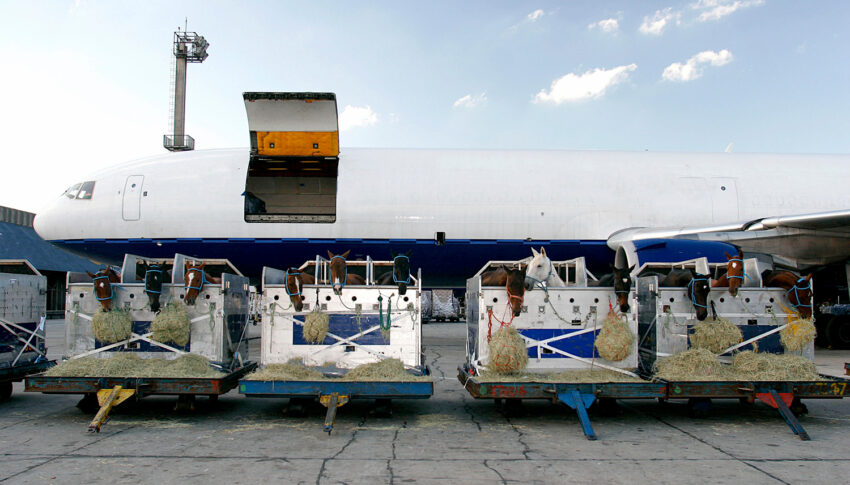Beyond containers, pallets and nets, new developments in high-value cargo transportation are proceeding quickly, with multiple impetuses driving change — including, perhaps surprisingly, the safe transport of wheelchairs. On the ground at the Aircraft Interiors Expo, we toured multiple new options, opening up new ways of thinking about this kind of cargo.
When the aviation industry considers high-value cargo, once it moves past oversized or live cargo like horses or luxury cars, it thinks about works of art, museum artefacts, electronics, pharmaceuticals, refrigerated food delicacies, luxury fashion items, or specialised parts for industries from automotive to its own aviation needs.
Each of these kinds of cargo has its own special requirements for safe and secure carriage, which must sometimes be bespoke to the item carried. Often, this is inside a standard Unit Load Device (ULD), but this creates restrictions around the kind of aircraft, usually large, that can ship them.
Those might include shipment complexities for pharmaceuticals, like the ultra-cold storage requirements for products like the vaccines for COVID-19 and Ebola, where the aviation industry had to work at pace with medical experts and regulators to increase capacity at speed and with urgency.
Sometimes, however, high-value cargo is a lot more personal: for example, for powered wheelchairs that some disabled people and travellers with reduced mobility use as their sole or principal means of getting around. Many of these expensive and fundamentally necessary wheelchairs are damaged — among the statistics for US airlines alone, statistics show that over 1000 wheelchairs a month were damaged in much of last year — and regulators are looking to act.
While innovations are en route to enable powered wheelchairs in the cabin, like the Air4All wheelchair restraint system, developed into the Delta Flight Products PRM Suite and on track to secure TSO (Technical Standard Order) approval this year, industry suppliers are also looking to provide improved protection for this sort of high value cargo if it does need to go into the hold. Much wheelchair damage is the result of improper handling, so adding protection and developing standard handling practices can help.
Boeing, for its part, is working on a concept it calls the High Value Cargo Container, at an early stage now but around the size of a standard ULD container, with restraint devices on the inside in order to properly tie down a wheelchair and protect it from damage.
The opportunities to use this container for other high-value items are numerous, but what about the majority of smaller aircraft, whose belly cargo holds were never designed to hold ULDs, such as the Boeing 737 family and smaller regional aircraft — a substantial majority of short-haul flights? While the A320 family can take a height-reduced container, LD3-45, not all A320 operators use these containers and instead use bulk cargo loading.
Delta Flight Products is offering what seems to be the simplest and in many ways most elegant of the options on the table, with what is essentially a fold-up plinth slightly larger than a powered wheelchair, which can be stowed flat and deployed into a long, open L-shaped rack. The wheelchair can be safely secured to the plinth via cargo restraints and standard locking systems, with direction from the wheelchair user if desired or required. The plinth, not the wheelchair, is then secured to the aircraft. A key advantage of this smaller system is that it also works for aircraft without ULD-capable holds.
The expansion opportunities for this sort of system to enable other kinds of high-value cargo and expand the reach of high-value shipments are significant, especially as the air cargo and airfreight segments experience cyclical constraints.
Author: John Walton
Published: 21st August 2024



